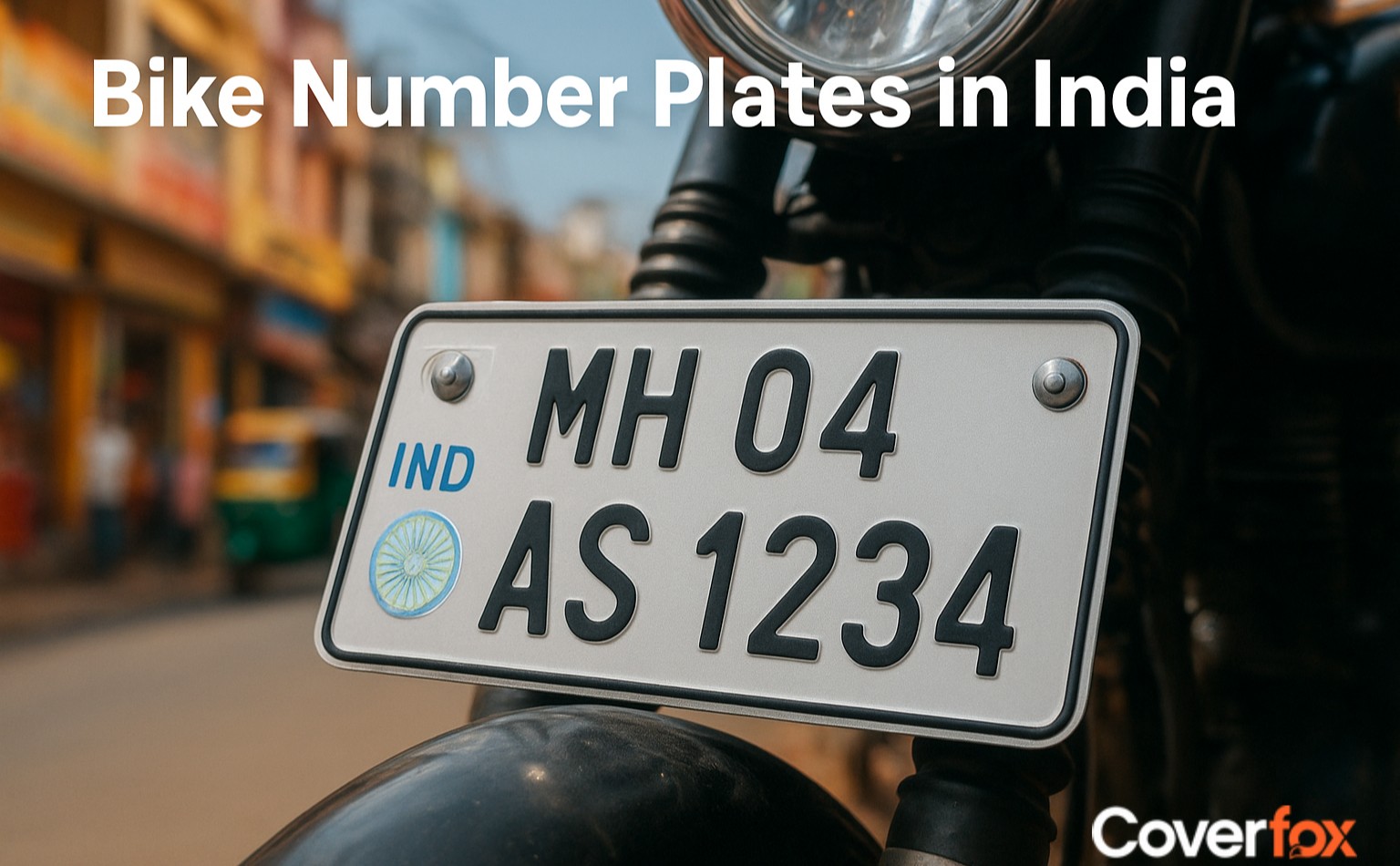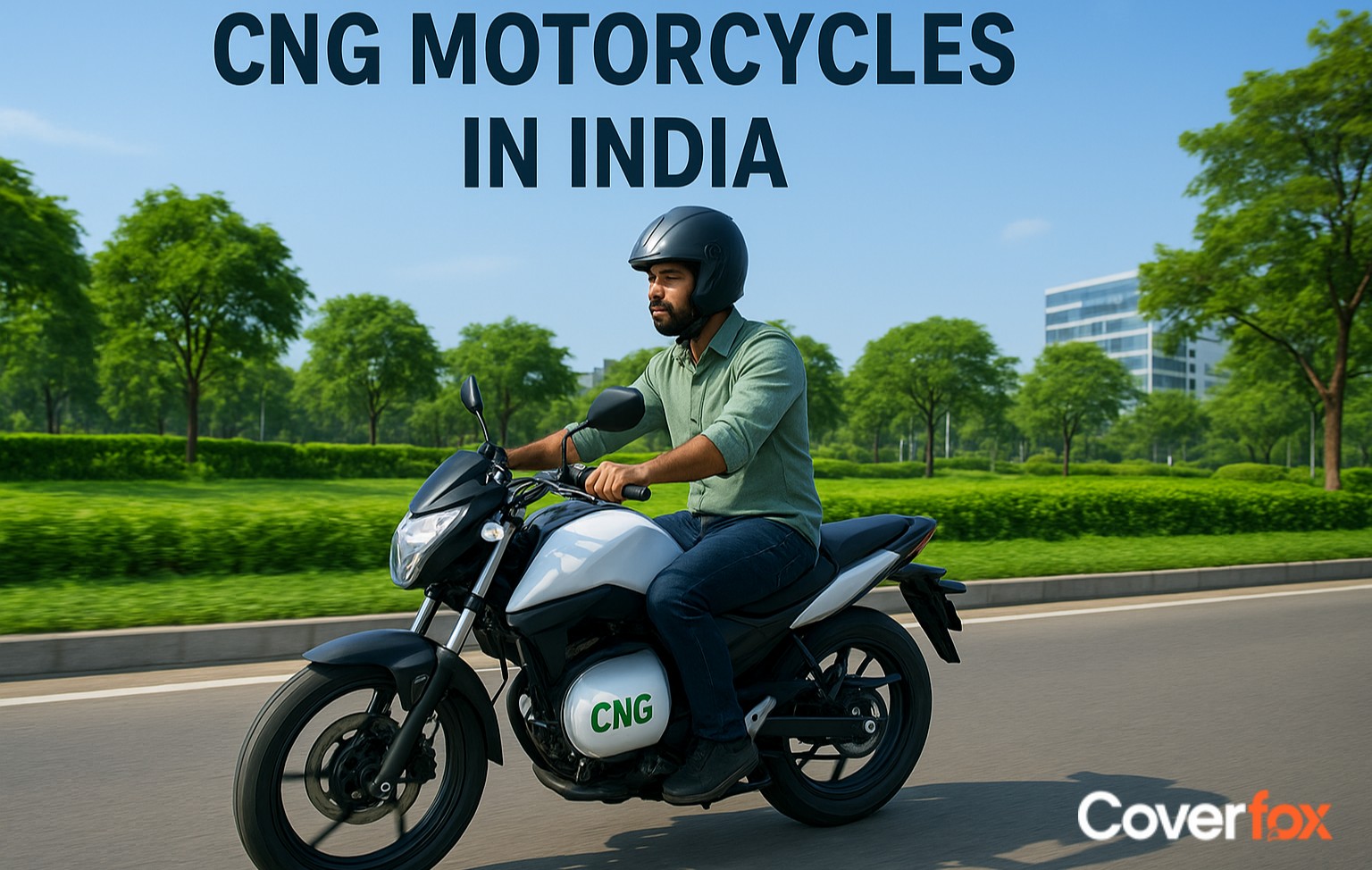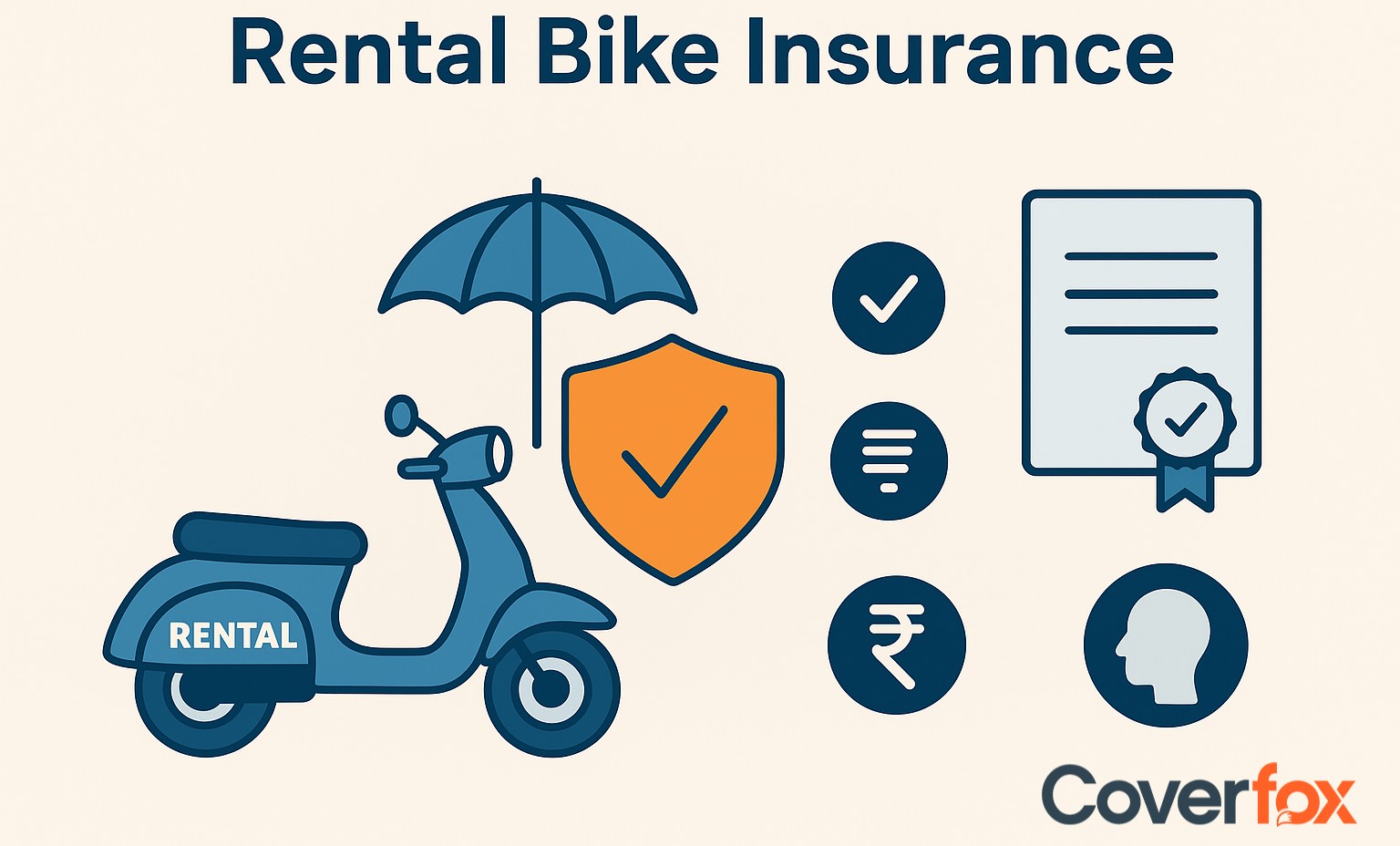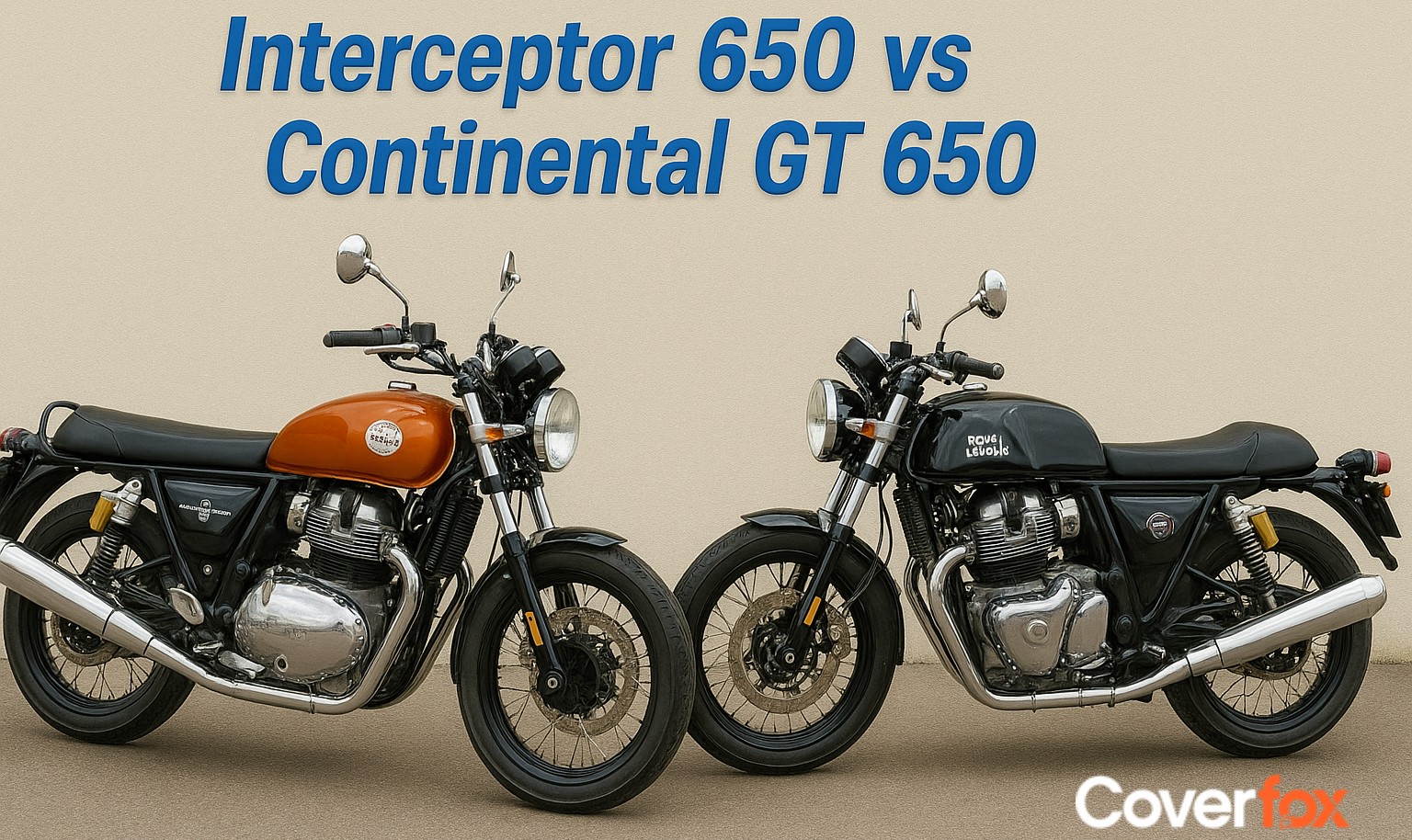Monsoon riding is one of the most desired traits for bike riders in India. Enjoying the weather, the beauty of nature and a long ride is a fun activity for many.

While enjoying the bike ride in the rain is a great experience, it can turn really ugly because of the risks that come with it. The road conditions, potholes, waterlogging, flood-risk, skid-risk, etc, pose a major threat to bike riders in monsoon. A previous MorTH report showed that 6% of the total bike accidents happen due to bad weather conditions. In such accident risk situations, having two wheeler insurance is a must, amongst other things, especially in monsoons. These tips during your bike rides in monsoon will make your life a lot easier:
Check the health of your bike tyres
Before the monsoon sets in, it is essential to check on the condition of your bike's tyres. Ensure that the tyres are in a good condition, have good grip and enough tread. The two-wheeler tyre tread is designed to ensure that the bike maintains grip on the road and disperses water. With regular wear and tear as the tread decreases, the chances of the bike slipping also increases, further causing accidents or injury, especially during rains. Also, don’t miss out on inspecting the tyres for minor cracks if any.
Do not ride at a great speed during the monsoon
Ride within a speed range of 30-40 km/hr as the risk of the bike skidding is high on wet roads. Due to the rains, the traction between the water and the bike decreases, hence it is best to ride at a normal speed. Driving at a slow speed also ensures that you can apply brakes on time and can match up with the sudden changes in the environment. Avoid aggressive riding as it can take you off guard and lead to a crash.
Don’t splash water
While passing your bike through puddles may seem exciting, reminding you of your childhood days, it can also take you by surprise, resulting in a bike crash. Riding through a puddle can be unsettling for you as you may not be aware of the depth of the pothole under the puddle and the water can even enter the spark plug, leading to bike damage.
Don’t brake bad
Oil spills, wet roads and wet roads make up for a bad combination, proving to be fatal for your life. Improper braking can prove to be dangerous not only for you, but also for your fellow riders, drivers and pedestrians. Ensure that you have good control of your bike and that the brakes are in good condition. Ensure you check your brake pads regularly, especially in monsoon, as water can reduce braking efficiency and increase wear and tear. Regularly clean brake pads, remove dirt or water or any hindrances that can affect your bike’s braking system.
Keep your monsoon gear ready
In case you are riding without proper monsoon gear, then invest in it as soon as possible. Buy a good pair of waterproof jackets, trousers, sunglasses, and riding boots. In monsoon, your bike requires specific gear like:
Waterproof bike cover
Monsoon or dual compound tyres
Mudflaps and extended fenders
Disc brake cleaner or waterproof brake oil
Handle grip covers or anti-slip grips
Helmet rain visor or anti-fog inserts
Rider rain gear (jacket, gloves, boots
Shields your bike from rain, dust, and rust buildup.
Offers better grip on slippery roads to prevent skidding.
Minimise water splash and keep the engine area cleaner.
Ensures effective braking even when wet.
Improves control by reducing slippage during rain.
Maintains clear visibility in foggy or rainy conditions.
Keeps you dry and comfortable throughout the ride.
Avoid riding through water logged areas
Another safety tip to follow during the monsoon season is to stay away from riding through water logged areas. The engine can get damaged due to water logging and can be quite a hassle to repair. In waterlogged areas, you can even find it difficult to spot potholes or open manholes. Thus, it is best to avoid riding through waterlogged areas to ensure you and your bike both stay safe.
Check for moisture
The moisture of the rainy season can have a great impact on the air filter and other similar parts of your vehicle. If the engine of the vehicle switches off midway or if you feel any resistance when starting off the vehicle then it is best to get various parts checked to clean moist areas and resolve the problem. One of the major moisture problems is rusting. Use anti-rust sprays and lubricants to prevent corrosion of crucial components, and ensure smooth running of the moving parts of the motorcycle. For motorcycle hinges and levers during monsoon, a general-purpose grease, or a lubricant with anti-rust properties, is recommended.
Tips for riding through standing or flowing water
Standing or flowing water can be a challenge to maneuver your bike through. These simple tips and tricks will go a long way to ensure smooth and reliable ride through standing or flowing water:
Assess the water depth
Stick to the centre of the road
Ride in first gear
Avoid sudden acceleration or braking
Keep revs high when in water
Watch for potholes and debris
Let vehicles ahead go first
Avoid riding in fast-flowing water
Clean and lubricate chain post-ride
Avoid riding through if water covers more than half the tyre.
It’s usually the highest and least flooded point.
Maintain steady throttle to avoid stalling in water.
It reduces traction and may cause skidding.
Prevents water from entering the exhaust.
Hidden obstacles can cause serious damage or falls.
Observe their path to gauge water depth and safety.
Even shallow flow can destabilise a two-wheeler.
Removes moisture and prevents rust formation.
What to wear when riding a motorcycle in the rain?
Equipping yourself with proper monsoon gear while riding a motorcycle in the rain is essential and improves safety. These gear will help you smoothen and ease up your ride in the rain:
Waterproof riding jacket and pants
Rain suit or overcoat
Waterproof gloves
Anti-fog helmet visor or rain visor
Neck gaiter or balaclava
Rainproof backpack cover or tank bag
Keeps your body dry and warm during the ride.
A full-body layer worn over gear for added rain protection.
Protect your hands from cold, wet conditions and maintain grip.
Ensures clear vision despite rain or fog build-up.
Prevents rainwater from dripping into your jacket.
Protects your belongings while riding in the rain.
How to wear riding gear to minimise the chances of getting wet?
Having all the gear ready is not enough; you need to perfectly suit up to avoid getting wet. Here are some tips:
Wear a rain suit over your gear
Zip and seal everything
Tuck gloves into sleeves
Pull pants over boots
Use a well-sealed helmet and visor
Carry dry backups
Go one size up for full coverage.
Close all flaps, zips, and Velcro tightly.
Prevents water from entering through arms.
Keeps water from leaking into your shoes.
It stops rain from seeping in.
Keep extra socks or gloves for long rides.
How to take care of your bike after riding in the rain?
Here are some post-ride maintenance tips during monsoon for your bike:
- Wipe the bike dry to prevent rust.
- Clean and lube the chain to restore protection.
- Check brakes and tyres for performance and debris.
- Dry the exhaust and engine to avoid moisture buildup.
- Inspect electricals for water damage.
- Clean mudguards and underbody to prevent clogging.
- Top up fluids if needed.
- Park in a dry place to keep it moisture-free.
- Use anti-rust spray on exposed metal parts.
Stay insured
Another important monsoon bike tip is to check on the validity of your bike insurance policy. If it is due for renewal, renew it instantly to avoid losing out on coverage. It is important to buy or renew bike insurance on time to continue staying covered in the monsoon and avoid losing out on NCB benefits. You can also choose to purchase add ons such as pillion rider, engine protection, etc to get enhanced coverage. Buying comprehensive cover helps you keep your bike protected against man made and natural calamities.
With the above given monsoon bike tips, you are all set to take on the road even while it is pouring heavily. Don’t forget to wear a helmet and other necessary gears to stay protected. Also, ride safe.
Key Takeaways
Monsoon rides are fun, but risky. Ensure you utilise all the safety precautions and tips mentioned in this article for utmost safety. Also, do not forget bike insurance, it's your financial safety net and final layer of protection against the rain. Follow all these tips to be able to enjoy your monsoon ride with most pleasure and not compromise on safety at the same time. Enjoy monsoon rides with safety!
Also Read: Difference between bike warranty and bike insurance
Frequently Asked Questions
How often should I apply anti-rust treatment to my bike in the rainy season?
Apply every 2–3 months during the monsoon or after heavy exposure to rain and moisture.
What should I look for in a waterproof bike cover?
Ensure it's made of durable, UV-resistant material with sealed seams and a snug fit to protect against wind and water.
How do I maintain my bike’s chain during rainy weather?
Clean the chain regularly and apply a water-resistant chain lube to prevent rust and wear.
Can rain affect my bike’s electrical system, and how can I protect it?
Yes, it can affect your bike’s electrical system. Use dielectric grease on connectors and keep the battery and fuse box dry and secure.
What kind of riding gear is best for the monsoon season?
Waterproof riding jackets, pants with sealed zippers, non-slip gloves, and anti-fog visors or goggles.
How does rain affect bike tires, and what can I do about it?
Rain reduces traction; ensure your tires have adequate tread and proper air pressure to avoid skidding.
How can I tell if my bike’s brakes need maintenance during the monsoon?
Look for reduced braking efficiency, squeaking sounds, or a spongy brake lever—indicators that cleaning or replacement is needed.





